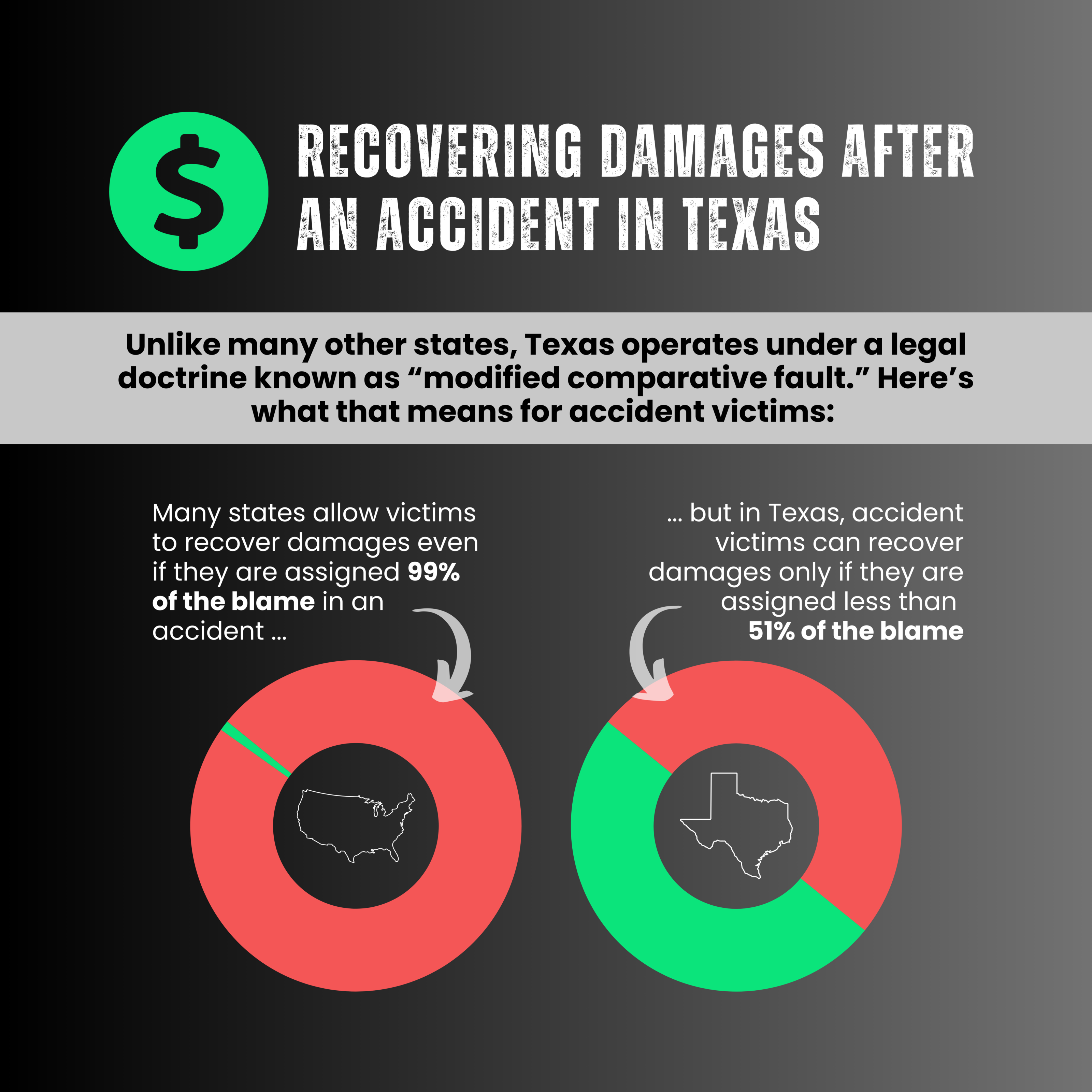Personal injury cases can be confusing. Unless you work in law or have been through the process before, you might find your head spinning when trying to understand the many factors that can impact a single case. For example, in Texas, the modified comparative fault statute plays an important role in many cases, yet most people don’t know what it is or what it means.
In this article, we are going to clear up any confusion and help you to understand this concept in plain English. Let’s get started!
What is Comparative Fault?
The world is a messy place. While it would be neat and tidy to assign blame for all accidents to one specific party, that’s just not reality. Often, more than one party is at fault in an accident, and the legal ramifications in such a situation can be rather complex.
This is where the concept of comparative fault comes into play. When more than one party is to blame for an accident, this system allows for degrees of fault to be assigned to each party. That way, rather than one party being held financially responsible for the whole thing—which wouldn’t be fair—that responsibility can be divided up in an appropriate manner.
Different Types of Comparative Fault
With a baseline explanation of comparative fault in place, let’s look closer at how the system is applied. There are different ways in which comparative fault can be used to determine the outcome of personal injury cases. Once is pure comparative fault —in this arrangement, you could be assigned blame for 99% of an accident and would still be eligible to pursue damages for the remaining 1%.
This format is rather forgiving to those who bear responsibility in an accident and allows many people to go after damages—even in a case where they were mostly at fault for what happened. That doesn’t mean that someone who is assigned the majority of blame in an accident is going to be successful in their pursuit of damages, but they will not be prevented by the law from taking that step.
How It Works in Texas
The above example is not how it works in Texas, however. In the Lone Star State, we use what is known as modified comparative fault. Under those rules, it’s only possible to recover damages if you are found to be less than 51% at fault for an accident. Anyone who is assigned 51% or more blame in an accident will be legally prevented from recovering any damages related to the case.

Obviously, setting that bar at 51% is an important decision, as this means that anyone who winds up splitting the blame 50-50 for an accident can still potentially recover damages. If you are in an accident that is deemed to be the fault of both parties—and that blame is evenly distributed—it might be possible to recover some damages, depending on the many details of the situation.
Determining Fault in a Personal Injury Case
Some people mistakenly believe they need to be completely free from fault in order to recover damages in a personal injury case. As seen here, in the state of Texas, that is simply not the case. As long as you don’t take the majority of blame for the accident, you can explore your options and see if taking legal action makes sense.
The process of determining fault is a complex topic in its own right, as many different factors have to be considered and experts have to be used to put together the pieces of what occurred. When it comes to traffic accidents, issues like violations of traffic laws, behaviors such as distracted driving or driving under the influence, and more can all be brought into the equation. Plenty of traffic accident investigations will result in one party being found 100% at fault, but many others will share the blame between parties when mistakes were made on both sides.
Making the Right Decisions
Understanding the basics of the comparative fault statute in the state of Texas is important because it can help inform your decisions moving forward. You might have to negotiate compensation with an insurance company, decide whether or not you want to take the case to court and develop a strategy to minimize the blame you are assigned in the end.
There is never any guarantee when it comes to the outcome of a personal injury case. With that said, knowledge is always a good thing, and working with an experienced Texas personal injury lawyer will position you to hopefully come away with a satisfactory outcome.

Nelson J. Roach is a partner at the Roach Law Firm in Daingerfield, Texas. Over the last 30 years, Nelson has represented thousands of clients in many groundbreaking cases. Read more…

